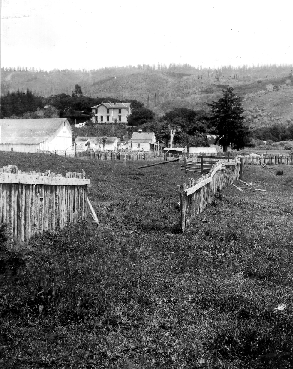
|
Science from the Ashes
Before the 1906 report, only a few of Lawson’s contemporaries understood the relationship between faults, manifested by visible tears in the ground, and earthquakes. In a 1999 paper for the Geological Society of America on the evolution of ideas after the 1906 earthquake, Carol Prentice of the U.S. Geological Survey writes that Lawson’s report “provides a glimpse into the origin of most of the modern concepts about the San Andreas Fault and earthquake recurrence.” The 1906 report included the first complete description of the entire San Andreas Fault from Point Delgada, in the north, to Whitewater Canyon, southeast of San Bernardino. The report also described the San Jacinto and Hayward faults, the latter having produced a magnitude 7.0 earthquake in 1868 that was described by Mark Twain, who was visiting San Francisco when it occurred. At the time, most geologists assumed that vertical displacements were the most common and important geologic forces affecting faults. But the 1906 report documented in meticulous detail, and subsequent studies confirmed, a perplexing mystery: The movement along the San Andreas Fault in 1906 was primarily horizontal rather the vertical. Measurements of fence and road displacements clearly showed at least 16 feet (5 m) and possibly as much as 21 feet (6 m) of horizontal movement. The implications of this finding—that significant horizontal displacement could occur on a fault—would become controversial, and it would take many decades before the long-term geologic ramifications were clearly understood and accepted. It wasn’t until the 1950s that studies of the entire length of the fault revealed that hundreds of miles of displacement have occurred over time. In the 1960s, when the theory of plate tectonics was accepted, large-scale horizontal displacement was finally explained. In fact, analysis from the San Andreas Fault, beginning with the 1906 report, became a key piece of evidence supporting our understanding of the behavior of boundaries between tectonic plates. Geologist Carol Prentice also notes that the underpinning of many current ideas on seismic hazards can be found in the 1906 report. Detailed surveys revealed a pattern of building damage that correlated to the composition of the underlying soils. Buildings on top of loose sedimentary soils suffered far greater damage than buildings on more solid ground. This pattern would repeat itself in the 1989 Loma Prieta earthquake that caused extensive damage in San Francisco’s Marina district and China Basin, neighborhoods that are built largely on landfill. A final legacy of the 1906 report was the understanding of how earthquakes along the San Andreas occur. By carefully examining the documented ground displacement from 1906, Johns Hopkins professor Henry Reid, who was on the Lawson committee, introduced the first scientific theory of the cause of earthquakes. He proposed that a fault accumulates strain over time, like a stretched rubber band. Imagine that rocks on either side of a fault are locked together by friction, yet each side is being tugged in a different direction by moving tectonic plates. In response to this tugging, the rocks actually change shape, which is known as strain . But there’s a limit to how much the rocks can deform. Then the fault breaks free in a sudden release. This gradual build-up and sudden release of strain, known as the elastic rebound theory, is believed to be a major cause of earthquakes along plate boundaries. References: The California Earthquake of April 18, 1906. Report of the State Earthquake Investigation Commission. Andrew C. Lawson, Chairman. Washington, D.C.: Carnegie Institution of Washington, 1908–10. “The Great San Francisco Earthquake of 1906 and Subsequent Evolution of Ideas” by Carol S. Prentice, U.S. Geological Survey. Geological Society of America, Special Paper 338, 1999. |
Live Eye • Great Shakes • Quake Basics • Damage Control • Active Zone


